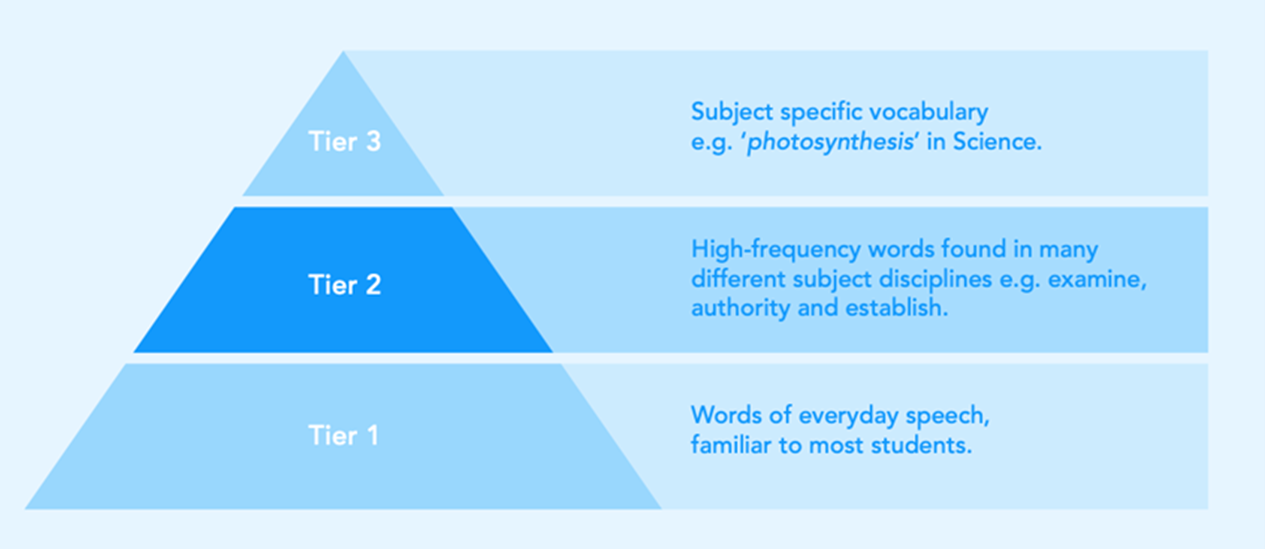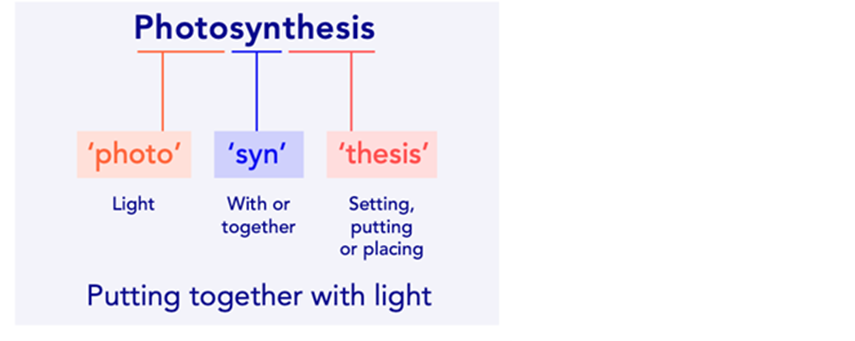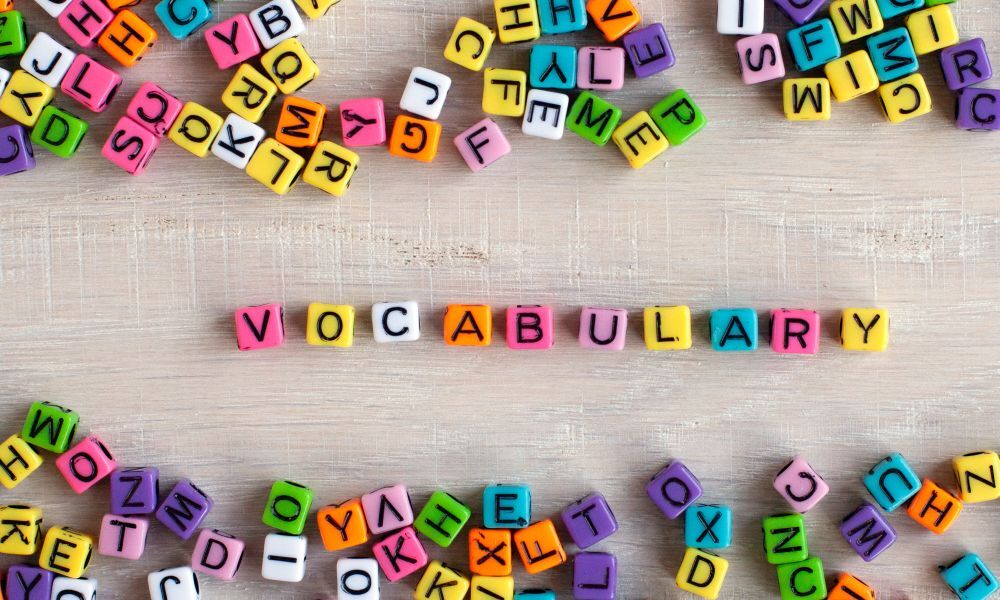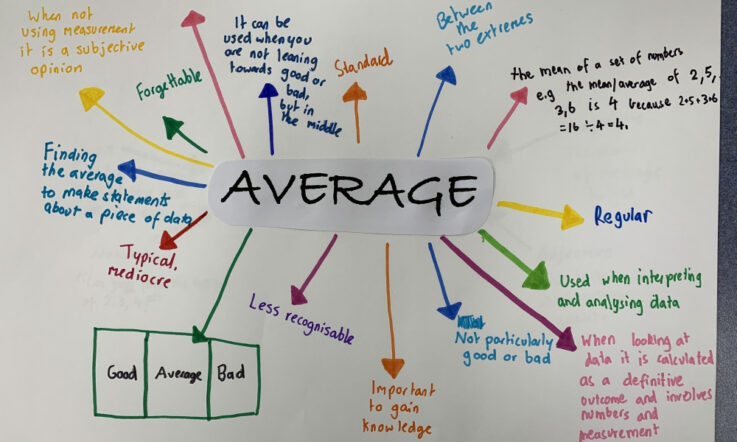In the first of 3 articles in a series on teacher planning, educational leader Michael Rosenbrock looked at how teachers can pro-actively plan to tackle student misconceptions in STEM. In this second instalment, he discusses evidence on the importance of deliberately planning to support students to build and use their vocabulary in science and mathematics, and what this could look like in practice.
The content that students encounter across their studies of science and mathematics contains myriad specialised terminology, along with everyday words that may have a different meaning in a particular discipline area.
Deliberately planning to support students to build and use their vocabulary is critical to ensuring that students can both access the curriculum content and effectively demonstrate their understanding.
A focus on building student vocabulary is aligned with the Australian Professional Standards for Teachers 2.1 Content and teaching strategies of the teaching area, 2.2 Content selection and organisation, 2.5 Literacy and numeracy strategies and 3.2 Plan, structure and sequence learning programs.
Before diving further into the specifics of vocabulary, it is important to highlight that vocabulary development sits with the broader development of a student’s literacy and is intertwined with oral language development, reading comprehension and writing.
The evidence on building vocabulary
The Teaching & Learning Toolkit from Evidence for Learning (E4L) summarises the global evidence on different approaches to lift learning outcomes in schools. The Toolkit indicates that there is extensive evidence that oral language approaches, such as explicitly extending students’ spoken vocabulary, can have a very high impact for very low cost (Evidence for Learning, 2023b). The evidence suggests such approaches work best when they relate to curriculum content and actively use new vocabulary in a meaningful way (Evidence for Learning, 2023c).
E4L’s Guidance Reports on science, mathematics and literacy (see references) draw on extensive reviews of the available evidence to make practical, evidence-informed recommendations. They include several key considerations relating to building student vocabulary:
- Carefully select key words to teach that are critical for student learning.
- Students need to be explicitly taught new subject-specific vocabulary.
- Use meaningful patterns within and across subjects to help build student understanding.
- Break selected words into morphemes to allow similar words to be more easily understood.
- Build understanding of common root words, prefixes, and suffixes.
- Explore the etymology of words in cases where the origin may help build a stronger hook for student understanding.
- Be aware of academic vocabulary that has a different meaning to the everyday use or to that in another subject area.
- Provide students opportunities to actively engage with new vocabulary and revisit it over time.
- Use graphic organisers such as concept maps or a Frayer model to deepen student understanding.
- Provide opportunities for implicit learning through a rich oral and written language environment.
- Some students will likely require high quality, targeted, and structured literacy support.
A helpful model for thinking about the breadth of vocabulary is the tiered model. Tier 2 and 3 words will be unfamiliar to students and require support from explicit teaching (Evidence for Learning, 2020d). Selected Tier 1 vocabulary may need further teaching where it has a different meaning in a subject compared to everyday use.
Figure 1. Tiers of vocabulary from Improving literacy in secondary schools (Evidence for Learning, 2020d)

Building student vocabulary in practice
What would it look like if we put this evidence into practice in maths and science teaching? Let’s look at a few examples from across the F-12 curriculum.
Building connections by exploring morphemes
Morphemes are the smallest parts of a word that contain meaning (Evidence for Learning, 2020c). In the Australian Curriculum at year 9 level, students encounter the concept of photosynthesis and its role in the carbon cycle (ACARA, 2022a). Taking the opportunity to explore the term ‘photosynthesis’ by breaking it into its 3 morphemes can help to build student understanding of the word and the concept it represents. This approach can also help students to make sense of other terms that start with ‘photo’ that they may encounter elsewhere in their learning – such as ‘photodiode’ or ‘photoelectric’.
Figure 1. The morphemes that make up photosynthesis, from Improving secondary science (Evidence for Learning, 2020d)

Identifying patterns in prefixes
There are many common prefixes that are encountered across disciplines. In mathematics, a teacher could build and reinforce student understanding by exploring the prefixes in a range of terms and having students identify the pattern. For example: ‘quarter’ and ‘quadrilateral’ or ‘triangle’ and ‘triple’. This knowledge can then be extended to understand other terms within maths, such as ‘quadrant’, as well as further afield in science, such as ‘triglyceride’ in chemistry. Working with prefixes and suffixes can benefit from collaborative planning between maths, science, and other subject areas.
Using etymology as a hook
Etymology is the study of the history and origins of words. This can provide a valuable hook and additional context for students to actively engage with new vocabulary. In biology, a teacher could introduce the term ‘symbiosis’ by unpacking its Greek origin (meaning ‘living together’ or ‘companion’). Students could be further supported to use etymology to independently explore origins of words using online tools such as Etym.online.
Words with multiple meanings
There are many words in English that are polysemous, which is to say that they have more than one meaning. Examples include: ‘weight’, ‘range’, ‘incident’, ‘complex’ and ‘sound’. These words often require direct instruction and active application to ensure students understand their meaning in a particular discipline. The term ‘power’ is one such example that requires particular attention as it has a differing meaning in maths compared to physics and can also be confused with everyday usage.
Command terms used in assessment
Vocabulary plays a key role in assessment of student learning. Both school-based and externally set assessment tasks within subject areas will commonly make use of Tier 2 ‘command terms’ – such as ‘describe’, ‘compare’, ‘explain’, or ‘analyse’. It is important to ensure that students are clear on what each of these terms is asking them to do in a particular subject. For example, the VCE Physics Study Design outlines the key verbs used in the subject and places them in a hierarchy of cognitive difficulty (VCAA, 2022). This is reflected in their use in the final examination. Planning to explicitly teach these terms, use them consistently across teaching and assessment, and provide opportunities for students to put them into action, can help ensure students can access assessment tasks.
Using graphic organisers
Graphic organisers can be valuable tools for supporting students to actively engage with key vocabulary. In the Australian Curriculum at year 7 level, students encounter the concepts of range, mean, median and mode (ACARA, 2022b). Students could use a Frayer model to elaborate on their understanding of one or more of these key terms, sharing with peers and obtaining teacher feedback to develop as robust and accurate graphic organiser as possible. In this instance, a useful modification of the typical Frayer model would be to add a diagram or picture to represent the concept.
Questions for teachers to consider
- Where might you find opportunities to collaborate with colleagues to prioritise key vocabulary to be explicitly taught?
- How can you use the components and origins of words to make links between content and develop student understanding?
- What approaches will you use to provide students opportunities to actively engage with vocabulary and revisit it over time?
- Are there whole-school vocabulary approaches to consider when addressing vocabulary in your planning?
- How can you ensure that your planning accounts for words which have more than one meaning which may impact student understanding?
Key takeaways
- Planning to build student vocabulary can support students to both access the curriculum content and to demonstrate their understanding.
- It is important to prioritise vocabulary that is critical for student learning, plan to explicitly teach it, and provide opportunities for students to actively engage with new words.
- Building links and supporting students to understanding the components and origins of words can be effective in building student understanding.
References
ACARA. (2022a). AC9S9U03, Science Understanding: Earth and space sciences: Year 9. Australian Curriculum v9.0. Author. https://v9.australiancurriculum.edu.au/f-10-curriculum.html/learning-areas/science/year-9/content-description?subject-identifier=SCISCIY9&content-description-code=AC9S9U03
ACARA. (2022b). AC9M7ST01, Mathematics: Statistics: Year 7. Australian Curriculum v9.0. Author. https://v9.australiancurriculum.edu.au/f-10-curriculum.html/learning-areas/mathematics/year-7/content-description?subject-identifier=MATMATY7&content-description-code=AC9M7ST01
Evidence for Learning. (2020a) Improving mathematics in upper primary and lower secondary. Evidence for Learning. Available from http://e4l.org.au/maths-primary-secondary
Evidence for Learning. (2020b) Improving literacy in lower primary. Evidence for Learning. Available from https://e4l.org.au/literacy-primary-lower
Evidence for Learning. (2020c) Improving literacy in upper primary. Evidence for Learning. Available from https://e4l.org.au/literacy-primary-upper
Evidence for Learning. (2020d) Improving literacy in secondary schools. Evidence for Learning. Available from https://e4l.org.au/literacy-secondary
Evidence for Learning. (2022) Improving secondary science. Evidence for Learning. Available from http://e4l.org.au/science-secondary
Evidence for Learning. (2023a). Improving mathematics in the early years with children aged
3‐7 years. Evidence for Learning. Available from https://e4l.org.au/early-maths
Evidence for Learning. (2023b). Teaching & Learning Toolkit. Evidence for Learning. Available from https://e4l.org.au/toolkit
Evidence for Learning. (2023c). Oral language interventions: Teaching & Learning Toolkit. Evidence for Learning. Available from https://evidenceforlearning.org.au/education-evidence/teaching-learning-toolkit/oral-language-interventions
VCAA. (2022). Physics Study Design. Victorian Certificate of Education. Author. Available from https://www.vcaa.vic.edu.au/curriculum/vce/vce-study-designs/physics/Pages/Index.aspx
Evidence for Learning is developing a resource focused on putting evidence to work in STEM, which you can find at this page: https://e4l.org.au/stem-in-schools



